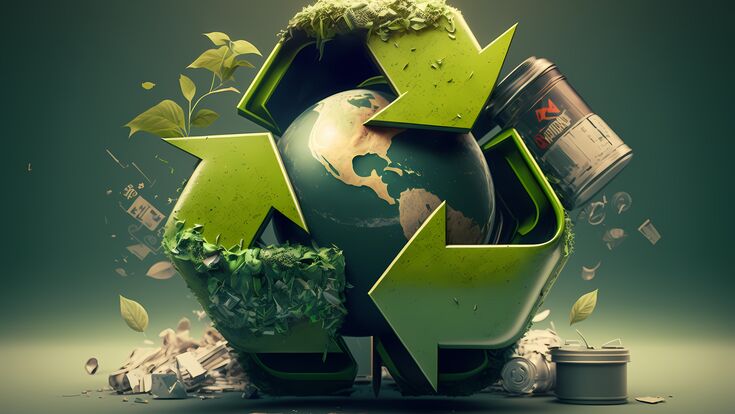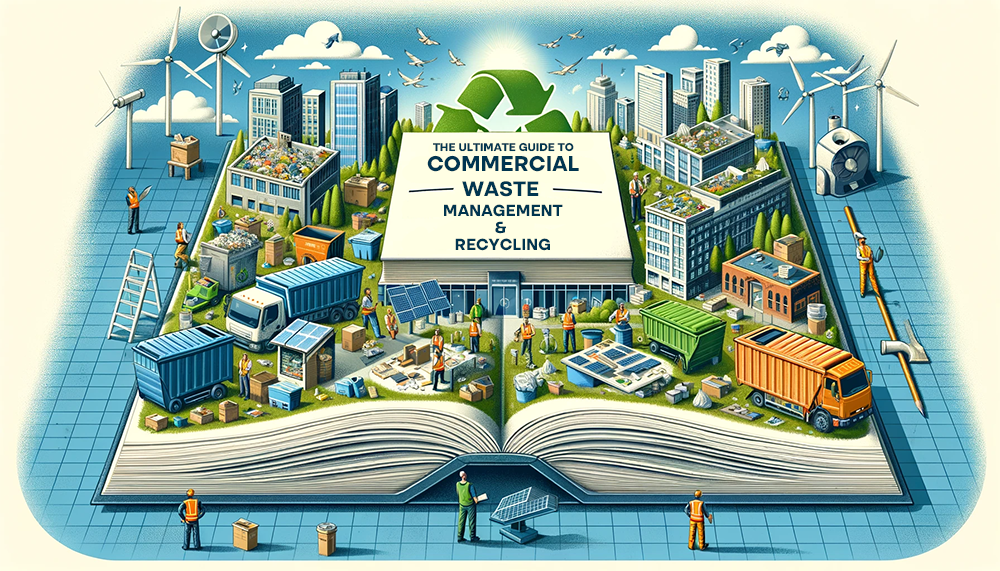Exactly How Recycling Lives Services Help Reduce Environmental Footprints
Exactly How Recycling Lives Services Help Reduce Environmental Footprints
Blog Article
Recognizing the Classification and Handling of Numerous Kinds Of Waste
Reliable waste management is pivotal for ecological sustainability, calling for an extensive understanding of the classification and handling of various waste types. Home waste, commercial spin-offs, dangerous products, electronic refuse, and organic remnants each demand distinctive methods to make sure safety and security and reduce ecological damages.

House Waste
Household waste, encompassing a wide variety of thrown out materials generated from day-to-day living tasks, stands for a considerable component of the general waste stream - recycling lives services. This classification consists of natural waste such as food scraps, lawn cuttings, and paper items, alongside not natural products like plastics, steels, and glass. The varied nature of home waste requires reliable category and monitoring to reduce environmental effect and promote sustainable living methods
Efficient household waste administration starts with segregation at the resource, assisting in recycling, composting, and secure disposal. Organic waste, for circumstances, can be composted to produce nutrient-rich soil amendments, reducing landfill worry and boosting soil health. Recyclable products, including paper, glass, and particular plastics, can be refined and repurposed, minimizing and saving resources power usage related to brand-new material manufacturing.
In addition, dangerous house waste such as batteries, electronic tools, and cleaning chemicals calls for specialized managing to prevent dirt and water contamination. Public recognition campaigns and hassle-free disposal options play vital roles in ensuring appropriate disposal and recycling of these products. By implementing robust waste decrease strategies and promoting area involvement, districts can significantly alleviate the environmental impact of home waste.
Hazardous Waste
Hazardous waste, a significant contributor to worldwide waste generation, encompasses a diverse variety of materials created by production, building and construction, and other industrial activities. This classification consists of spin-offs such as scrap steel, plastics, rubber, chemicals, and various other deposits. The composition and volume of industrial waste can differ significantly depending upon the market and manufacturing procedures entailed. Efficient management of hazardous waste is important for lessening ecological influence and advertising lasting techniques.
The handling of commercial waste commonly involves numerous procedures: collection, therapy, disposal, and partition. Collection systems are made to efficiently collect waste products from numerous resources within a commercial operation. Segregation is important, as it makes sure recyclable materials are divided from non-recyclable ones, which can be routed in the direction of proper recycling or disposal channels. Treatment processes, consisting of physical, chemical, and biological methods, are used to lower the poisoning, volume, and ecological impact of the waste. Ultimately, disposal techniques like landfilling or incineration are used for waste that can not be reused or treated.
Taking on approaches such as waste minimization, source recovery, and recycling can dramatically decrease the problem of commercial waste on the atmosphere, contributing to more lasting commercial practices.
Contaminated Materials
The classification of contaminated materials is usually based on its chemical and physical attributes. Harmful wastes contain harmful materials that can create negative health and wellness results also at low concentrations. Corrosive wastes can harm or ruin living tissues and products. Combustible wastes can easily stir up, posing fire dangers, while reactive wastes can create explosions or launch hazardous gases upon contact with various other compounds.
Efficient contaminated materials administration involves a number of key methods: recognition and segregation of unsafe materials, risk-free transportation and storage, and ideal treatment and disposal. Treatment methods may consist of chemical incineration, neutralization, and stablizing. Governing compliance is necessary, guided by frameworks such as the Source Preservation and Recuperation Act (RCRA) in the USA, which ensures eco audio and safe administration of contaminated materials.
Electronic Waste
Electronic waste, typically abbreviated as e-waste, represents an expanding obstacle in waste management due to the fast obsolescence of modern technology. This group incorporates a broad variety of thrown out digital devices, consisting of smart devices, computers, televisions, and house appliances. The intricacy of e-waste hinges on its make-up; these items contain a combination of beneficial products such as gold and copper, as well as harmful materials like cadmium, mercury, and lead.

Regulations and regulations, such as the European Union's Waste Digital and electric Devices (WEEE) Instruction, goal to advertise accountable e-waste monitoring. These policies mandate suppliers to assist in the collection and recycling of digital products, therefore my company minimizing the burden on garbage dumps and decreasing environmental contamination.
Organic Waste
Organic waste, incorporating biodegradable products such as food scraps, yard trimmings, and agricultural deposits, makes up a significant section of the community strong waste stream. This kind of waste is significant not just for its volume however also for its prospective ecological effect otherwise handled appropriately. Organic waste can decompose anaerobically in garbage dumps, generating methane, a powerful greenhouse gas contributing to environment adjustment.
Correct handling of organic waste involves a number of methods. Composting is an extensively adopted method, transforming organic products into useful garden compost that can enrich soil and support lasting farming. This procedure additionally reduces the volume of waste sent out to landfills. Another method is anaerobic food digestion, which breaks down raw material in the lack of oxygen, generating biogas that can be utilized as a renewable energy resource. In addition, diverting food waste from land fills through donation programs can ease food insecurity while reducing waste.
Municipalities and organizations are increasingly acknowledging the relevance of natural waste administration. Executing detailed natural waste recycling programs not only minimizes environmental influences however also aligns with more comprehensive sustainability goals, promoting a round economic climate where resources are continually recycled and repurposed.
Final Thought
Effective waste management and ecological security demand a thorough understanding of the classification and handling of different waste kinds. Applying suitable methods for each waste kind ensures risk-free and liable waste administration methods, inevitably contributing to the protection of ecosystems and public health and wellness.
Reliable waste management is critical for environmental sustainability, needing a thorough understanding of the classification and handling of various waste kinds.Household waste, encompassing a broad range of disposed of products created from day-to-day living tasks, stands for a substantial part of the web total waste stream.Industrial waste, a significant factor to international waste generation, incorporates a varied array of products generated by production, construction, and various other commercial tasks (recycling lives services).Unsafe waste, a vital problem in waste management, comprises products that posture substantial threats to human health and the environment due to their toxic, corrosive, flammable, or responsive buildings.Organic waste, incorporating naturally degradable materials such as food scraps, yard trimmings, and farming deposits, makes up a considerable portion of the municipal strong waste stream
Report this page